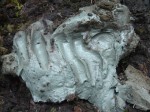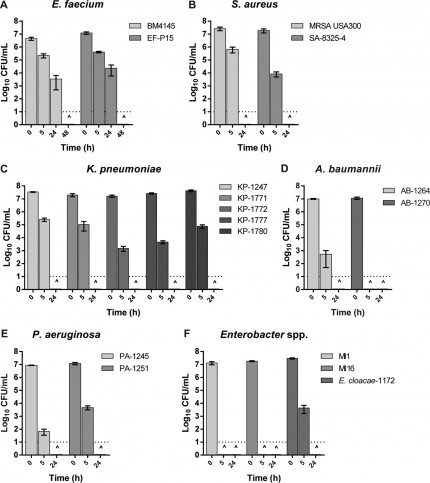 History steps in again to help fight the terrifying scourge of a post-antibiotic world in which even the smallest infection can cause death and entire fields of medical technology — organ transplants, device transplants, cosmetic surgery — are left undefended against the onslaught of pathogens. Last year there was the very promising study of a salve from the 10th century Anglo-Saxon home health remedies volume Bald’s Leechbook which was found to slaughter Methicillin-resistant Staphylococcus aureus (MRSA). Now researchers from the University of British Columbia (UBC) have found a glimmer of hope in the antimicrobial properties of a local clay from Kisameet Bay, British Columbia.
History steps in again to help fight the terrifying scourge of a post-antibiotic world in which even the smallest infection can cause death and entire fields of medical technology — organ transplants, device transplants, cosmetic surgery — are left undefended against the onslaught of pathogens. Last year there was the very promising study of a salve from the 10th century Anglo-Saxon home health remedies volume Bald’s Leechbook which was found to slaughter Methicillin-resistant Staphylococcus aureus (MRSA). Now researchers from the University of British Columbia (UBC) have found a glimmer of hope in the antimicrobial properties of a local clay from Kisameet Bay, British Columbia.
The 400,000 ton clay deposit developed in the bay about 10,000 years ago at the end of the last Ice Age. The people of the Heiltsuk First Nation, whose traditional territory includes Kisameet Bay, have used the clay for medicinal purposes for centuries. They take it internally for illnesses like ulcerative colitis and duodenal ulcers, and externally for problems like burns and phlebitis.
Studies from the 1940s onwards have found that Kisameet clay is different from your garden variety kaolinite or bentonite clays. It has a low mineral content in which the mica-like mineral biotite dominates. There’s also a flourishing community of up to 3,000 different taxa of microbes living in the deposit, among them Actinobacteria which may have an antimicrobial effect on non-local microbes.
The UBC research team wanted to see how the Kisameet Bay clay would deal with a panel of the scariest pathogens, the ESKAPE strains of bacteria.
The so-called ESKAPE pathogens — Enterococcus faecium, Staphylococcus aureus, Klebsiella pneumoniae, Acinetobacter baumannii, Pseudomonas aeruginosa, and Enterobacter species — cause the majority of U.S. hospital infections and effectively ‘escape’ the effects of antibacterial drugs.
“Infections caused by ESKAPE bacteria are essentially untreatable and contribute to increasing mortality in hospitals,” said UBC microbiologist Julian Davies, co-author of the paper published today in the American Society for Microbiology’s mBio journal.
The collected samples of 16 ESKAPE strains from hospitals and a wastewater treatment plant in Vancouver. Each sample was grown in vitro and each exhibited multidrug resistance. The resistant cells were then suspended either in plain water or in a solution including desiccated Kisameet clay particles. The team tested the samples at regular time intervals — 0, 5 and 24 hours — to see if the clay was reducing the number of detectable pathogens and how long it took to do so. The results were pretty bloody amazing.
Here’s a chart that illustrates the effect of Kisameet clay on six of the pathogens in the study. The y-axis is the concentration of pathogens in the sample. The x-axis is time. The ^ next to the bars is an indicator that zero viable cells could be recovered.

The study also found the clay has antifungal properties and shows the same antibacterial properties even when no actual mineral particles are extracted. An aqueous extract works as well, which means the active ingredients that are doing such a fine job of beating up resistant bacteria could be removed from the clay and used in medical preparations.
This research is funded in part by a corporation with a dog in the hunt: cosmetics concern Kisameet Glacial Clay which plans to market the clay’s healing properties. The good news is the UBC researchers won’t have to beg for spare change to staff their project like the University of Nottingham study of Bald’s eye salve was forced to do, but I’ll be very curious to see their results repeated by third parties with no connection to clay sellers. Also in vivo tests are essential.